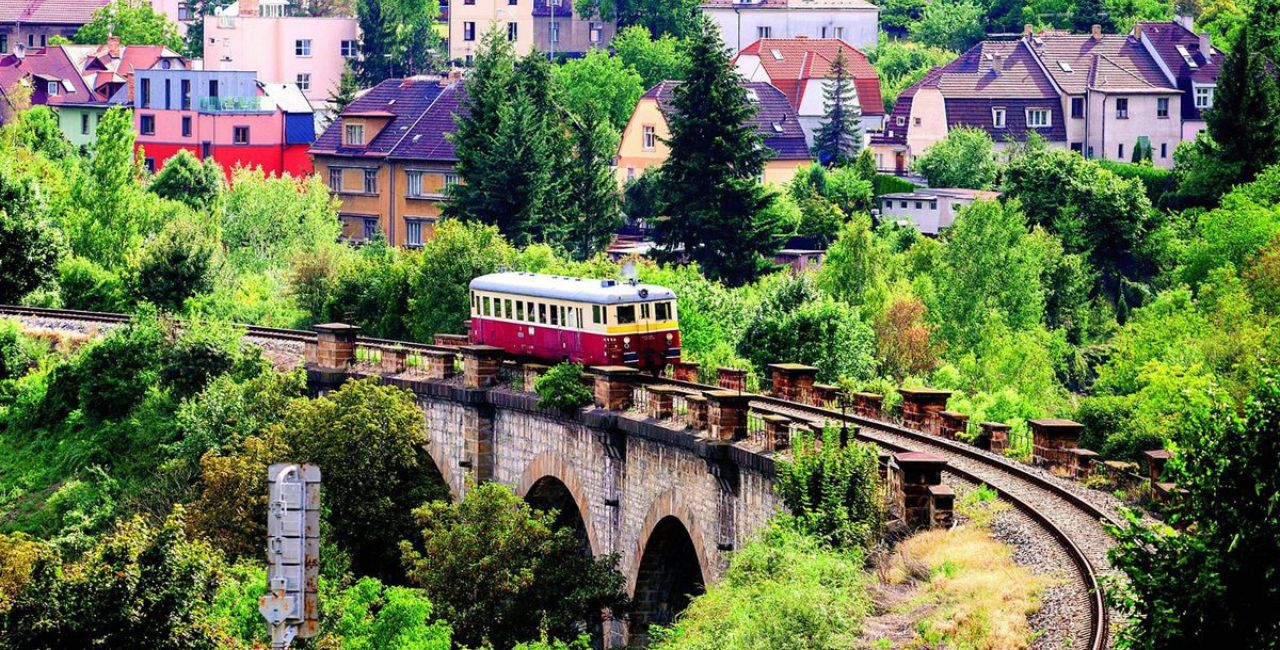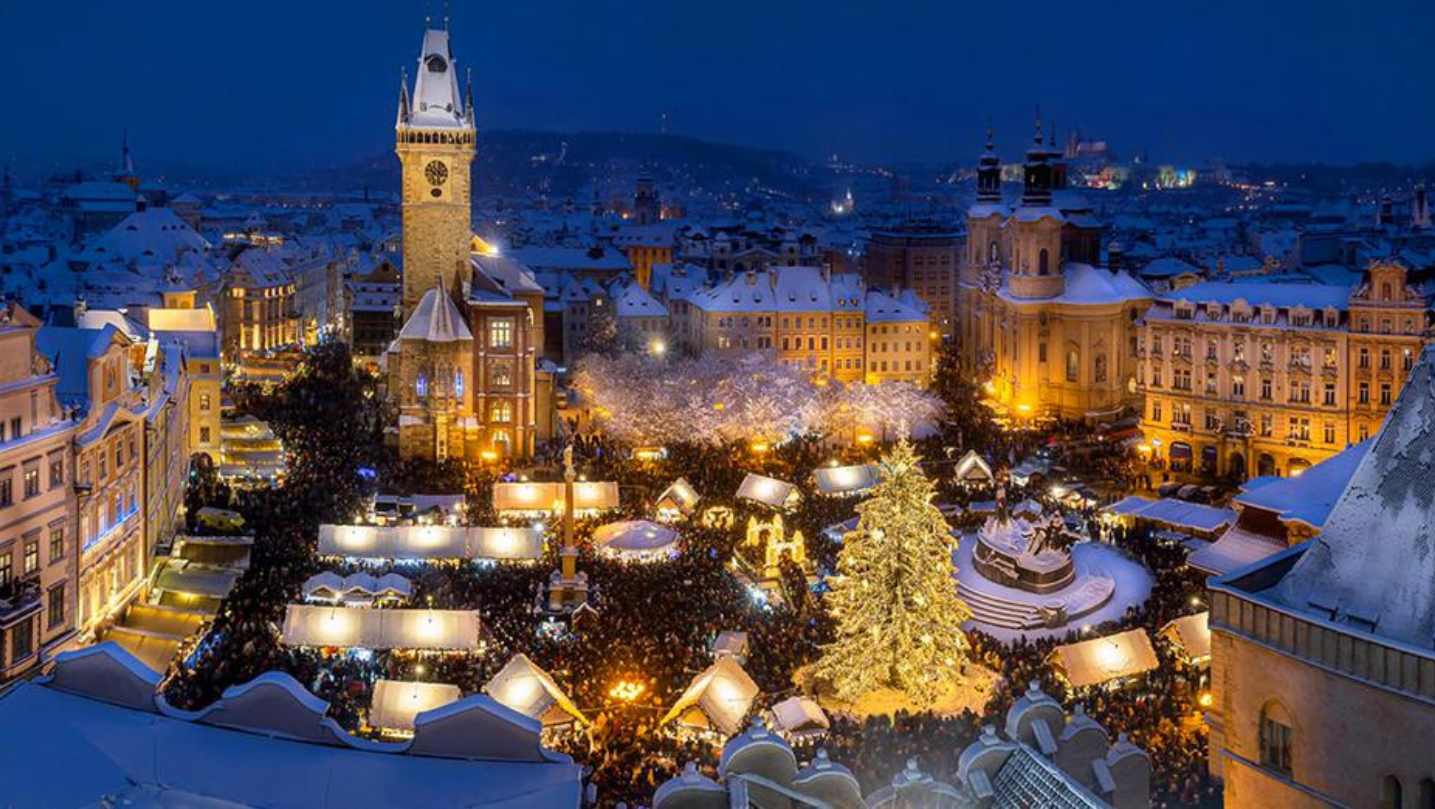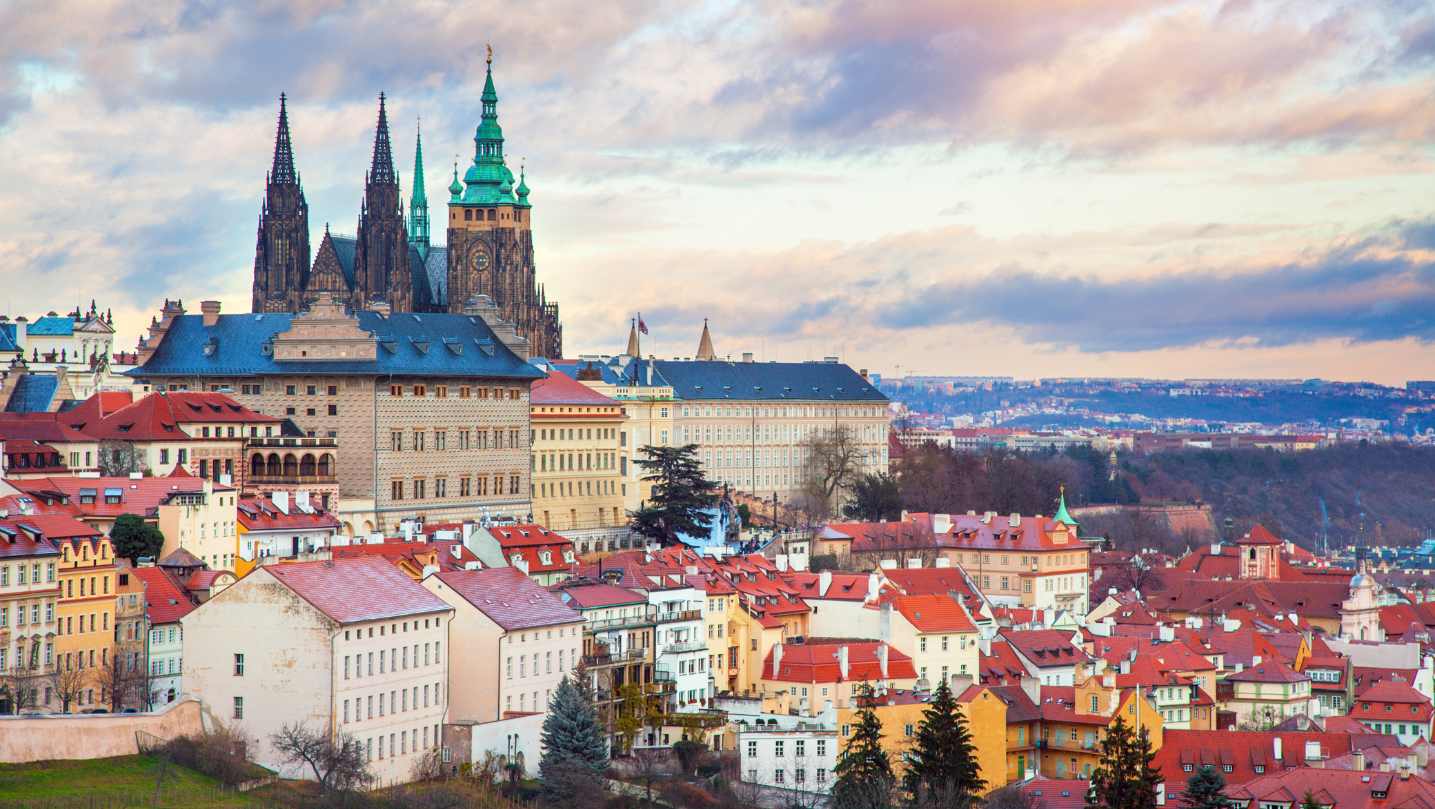The unforgettable atmosphere of travelling by a steam train and unique views of the capital are worth trying!
From the Smíchov railway station, the train goes to the Prokop Valley. The canyon in it reaches depths of up to 70 meters and it was created by erosion during the last million years.
Up to the station of Rudná u Prahy, we go on the track nicknamed “Humpbacked”. From Hostivice to Smíchov, the train runs along the route of the former Buštěhrad line which exceeds an altitude difference of 150 meters.
Thanks to its profile, the surrounding natural scenery, and two historical viaducts, the track has earned the name “Prague Semmering”.
The name Semmering is derived from the very first mountain railway in Europe – built in the Austrian Alps in the 19th century.
The final section of the journey allows you to admire the legendary Vyšehrad rock and the plain of Pankrác with modern buildings.
From the railway bridge across the Vltava river, you will also be delighted with the city’s spectacular skyline crowned by the majestic Prague Castle.
History
In the years 1868 to 1872, the company Buštěhradská dráha had a section connecting the then-known Smíchov Common Railway Station and Hostivice built primarily for the needs of freight transport.
The period between 1870 and 1872 belonged to the construction of viaducts crossing the Prokop Valley. The operation for freight transport, especially the transport of timber from Lány’s forests and Kladno coal, started on July 3, 1872, and in September of the same year, passenger trains also started running on the line.
However, commuter train traffic proved so weak that it ended in 1879.
Nonetheless, this does not mean that the track was not successful, on the contrary. Under the Austro-Hungarian Empire, it had to oppose efforts to nationalize for its profitability.
After 1918, there was an unexpected turnaround, when traffic density almost tripled, and so at one time, the second runway was even considered. Before that happened, the density of traffic dropped so much that at one point there were even plans of canceling the track.
Unexpectedly, this prevented the floods of 2002, during which it served to transport freight and even replaced the Prague metro for a short period.
-
NEWSLETTER
Subscribe for our daily news










